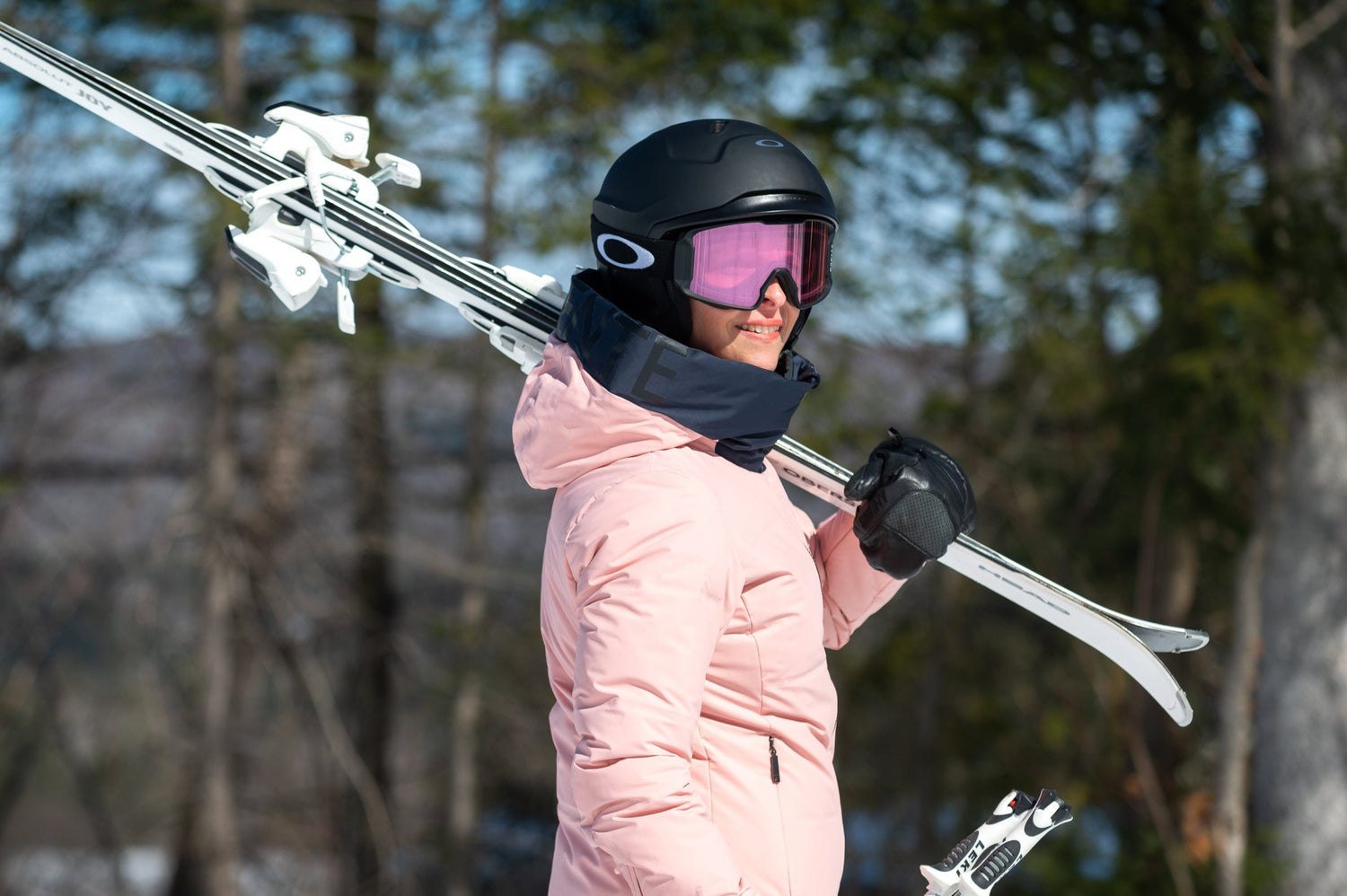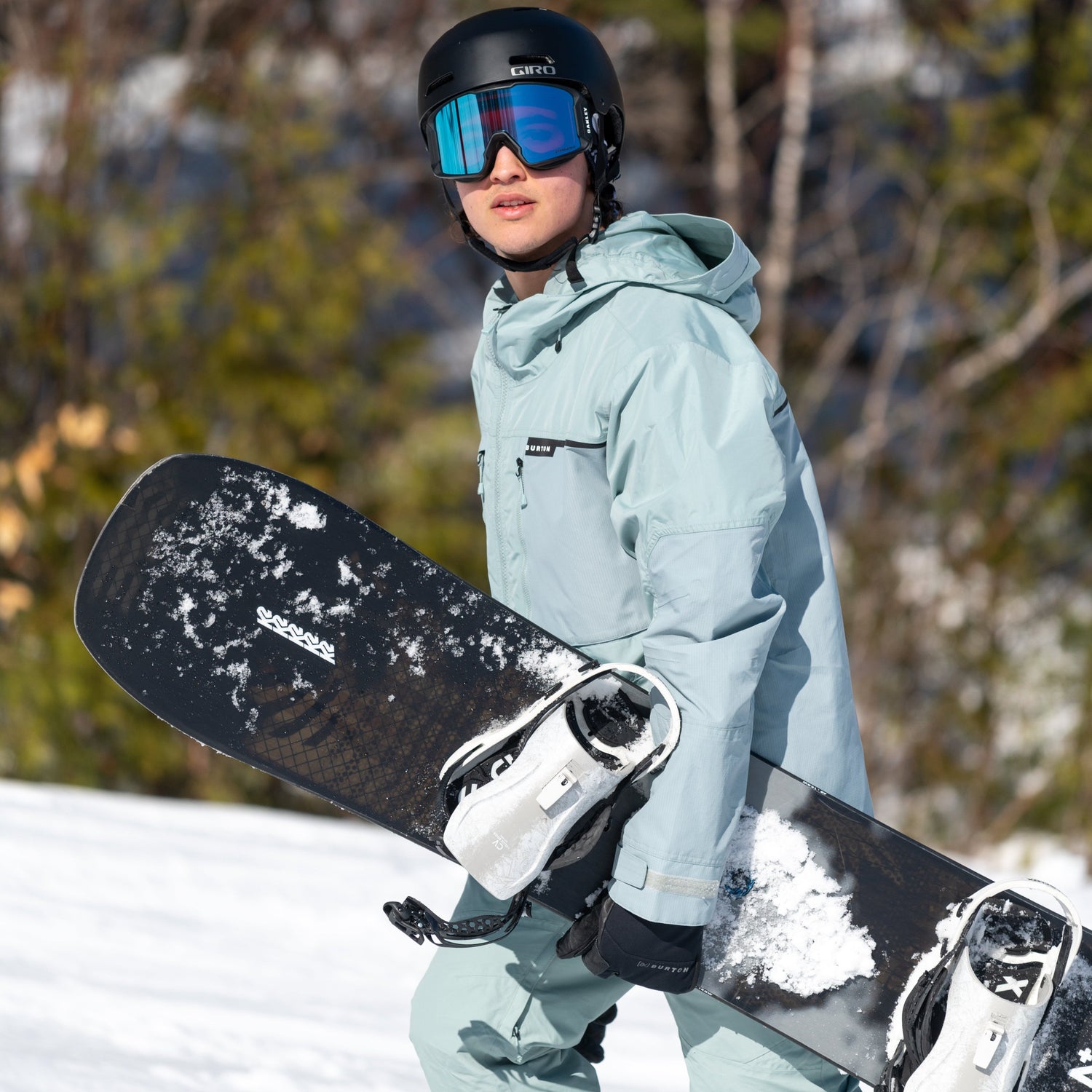Oberson x Nordica
_____________________________
Who are freeride skis for?
Freeride skis are for powder hounds who love trees and the backcountry. Their construction and profile make them excel in snowier conditions. Freeriders sometimes use these skis as a second pair due to the East’s somewhat variable winters. That said, all-mountain freeride skis are more versatile, which lets you use them on frontside runs.
Because they are primarily used on more technical terrain, freeride skis are mainly aimed at intermediate to expert skiers. The Unleashed line has freeride skis for all tastes.

Camber and Rocker
It’s all about contact points with the snow. It’s one of the aspects of downhill ski construction that determine how a ski behaves on different kinds of terrain.
A traditional camber is defined by the arch formed underfoot when the ski is laid flat without any load while the tip and tail remain on the ground. This means the contact points are closer to the tip and tail. Camber gives you stronger edge hold and more pop in turns.
You will also find rocker on various types of skis. When a ski has rocker, the tip and tail gradually rise, and the area underfoot touches the ground, still without any load. The contact points are therefore closer to the binding. Rocker makes skis float and easier to manoeuvre in powder. However, rocker doesn’t do as well on hard surfaces because there are fewer contact points.
A combination of the two (of camber with rocker) strikes a wonderful balance and provides real versatility.

Construction and Profile of Unleashed Freeride Skis
When it comes to freeride skiing, you should think about float and manoeuvrability. The Unleashed ski line is designed with a brand-new Shovel/Tail Rocker Design profile that has a double rocker with a steeper tip and more turned up tail. This new design has three key aspects:
-
A tail with increased rocker that makes it easy to turn in snow and more natural coming out of turns.
-
A longer camber that perfectly meshes with the more playful rocker profile at the ends.
-
A tip with a steeper rocker that makes for better turn initiation in fluffy fresh snow.
Unleashed skis are built with a high-performance wood core, sidewalls, fibreglass and carbon laminates, and a titanium layer. As a result, they’re light, responsive, stable and have a fun, playful side.

Types of Freeride Skis
1. Powder skis
Freeride skis for powder have a waist of 100 mm and above. Their width makes them easily float in deep powder and big terrain, such as bowls and glades.
The Unleashed 108 is ideal for such conditions. Its rocker profile at the ends combined with a camber at the waist make it exceptionally nimble in powder. Although snowy terrain is its natural habitat, camber under the bindings makes it stable and gives it bite on harder surfaces. Because adventures in the backcountry can hold many surprises!

2. All-mountain freeride skis
This kind of freeride ski is the one that best adapts to different conditions. Its profile and sidecut, with a waist width between 90 mm and 100 mm, make it more versatile than wider powder skis.
The Unleashed 90 is designed to provide better edge hold on-piste while still giving you incredible float on powder. Nimble and responsive, it’s ideal for tackling glades. It’s a great option for new freeriders.
The Unleashed 98 has more affinity for powder but is still quite versatile. Its waist width provides stability, gives it float and makes turns easy on snowy terrain. Its design with carbon and a titanium sheet better dampens vibrations during high-speed descents and on hardpack.

Choosing Your Freeride Ski Size
Because freeride skis are usually used in powder, you should choose a ski that’s your height or up to 10 cm longer. That way, you increase the ski’s stability and float. The size you choose depends on your skill level and the conditions. Shorter skis are much easier to manoeuvre.
To choose the size of your skis, see our article How to Choose Your Ski Size.



